Affiliate links on Android Authority may earn us a commission. Learn more.
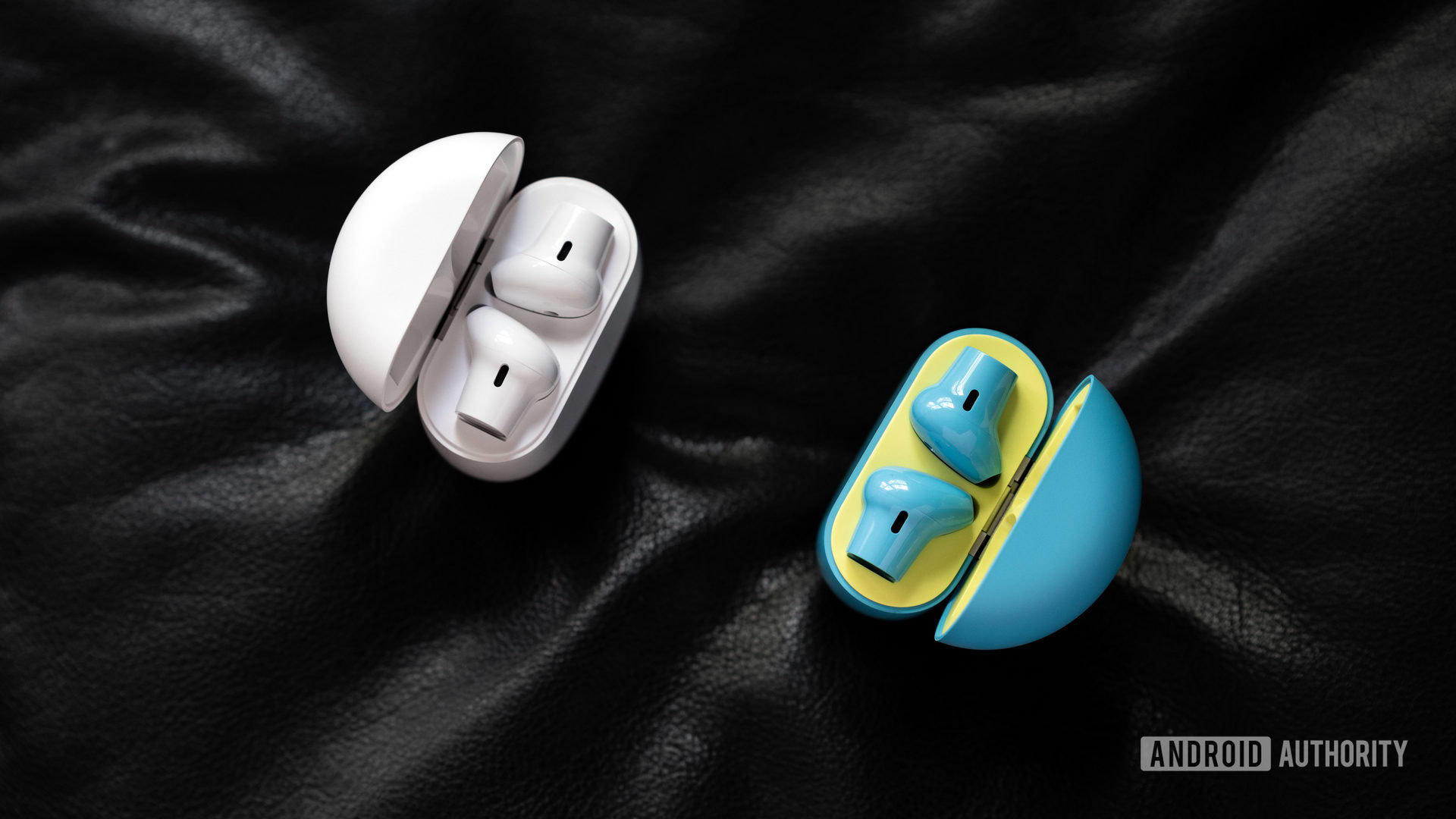
OnePlus Buds review: A good deal, but poor fit
Published onFebruary 5, 2022
OnePlus OnePlus Buds
What we like
What we don't like
OnePlus OnePlus Buds
Smartphone manufacturers are catching on to the trend that they can grab extra cash by accompanying their handsets with proprietary headsets. Today’s flash in the pan: the OnePlus Buds. Listeners are afforded a pair of uncanny valley Apple AirPods for a hair less than $80. Whimsy and portability aren’t enough to compensate for the lack of functionality beyond the OnePlus ecosystem, though. Let’s see how these earbuds work, and compare them to the competition.
Update, March 26, 2021: This OnePlus Buds review was updated to address the best headphones for the OnePlus 9 series.
Who should get the OnePlus Buds?
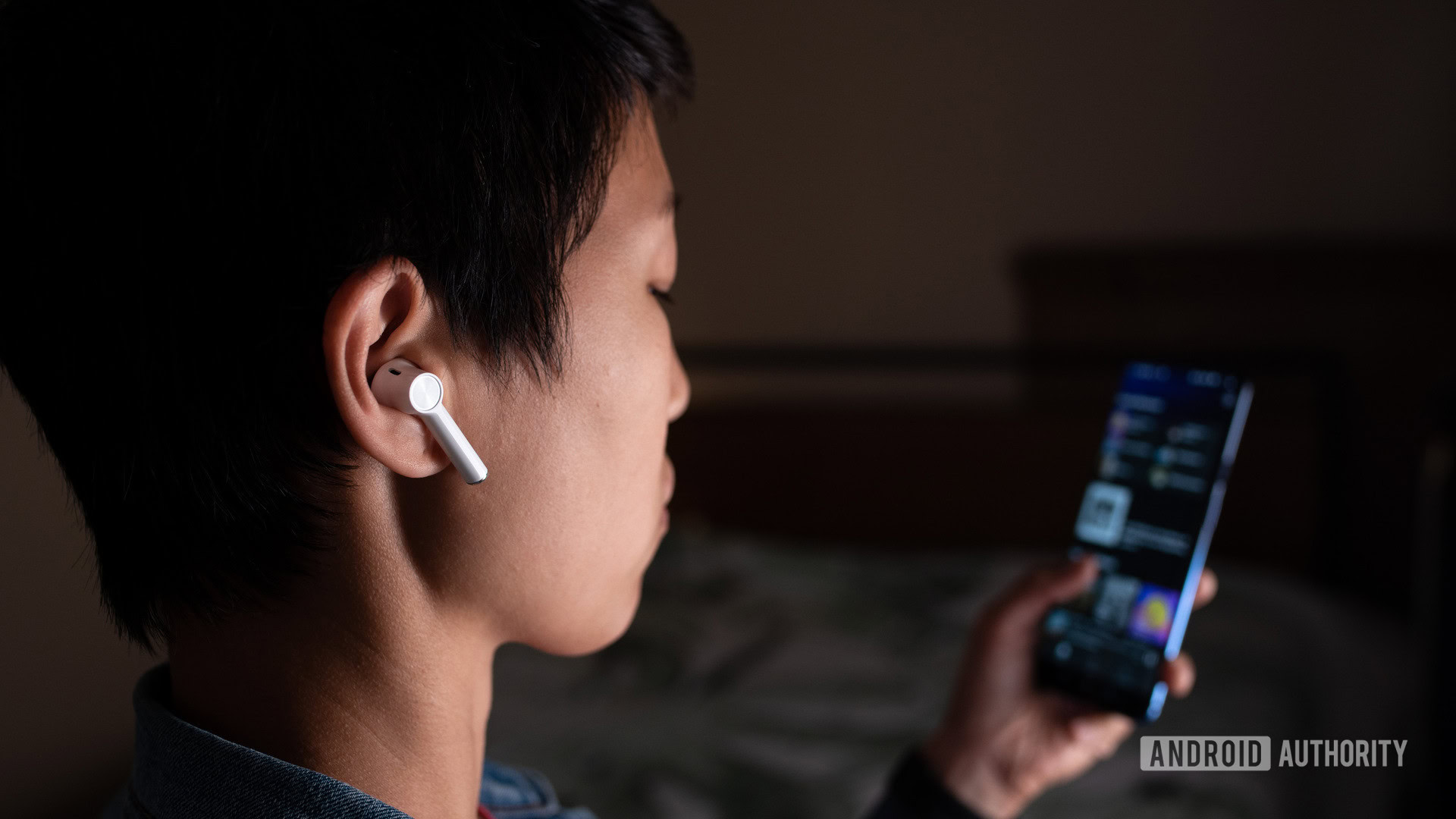
- OnePlus smartphone owners were initially the only ones to reap the long-term benefits of using the OnePlus Buds; only OnePlus smartphones could transfer firmware updates to the earbuds. Now, however, all Android 6.0 phones and later may update the earbuds via the HeyMelody app.
- Budget listeners unafraid of compromise will find things to love about these true wireless earbuds, namely the price and Warp Charge capabilities of the case. The earbuds are IPX4-rated, which makes them a smart option for anyone who lives in an unpredictable climate.
What’s it like to use the OnePlus Buds?
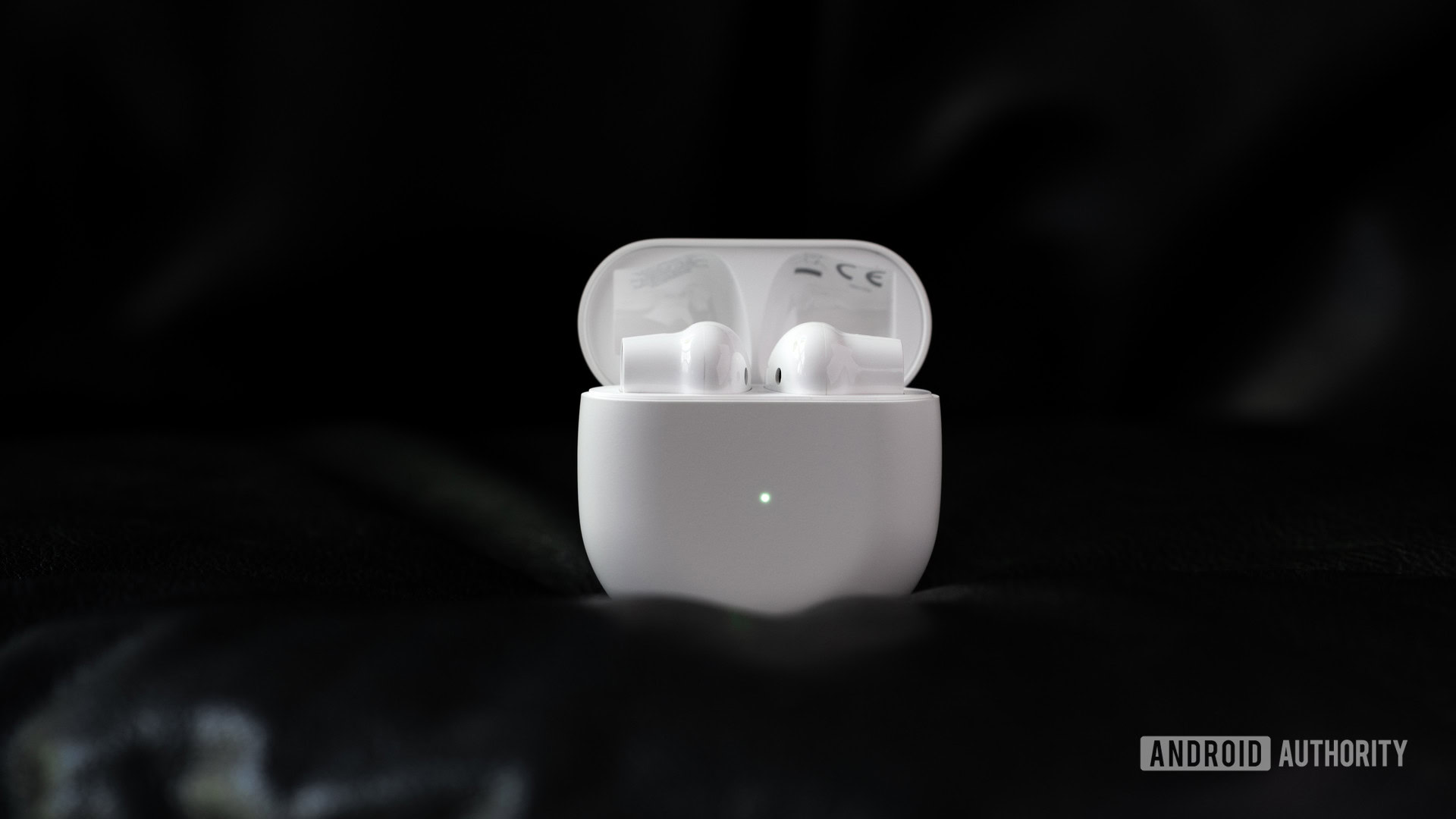
Every true wireless affair starts at the charging case, and the OnePlus Buds’ first impression is great. A matte finish coats the case, washing it with a more premium feel than the plastic suggests. The backside of the case hardly differentiates itself from that of the Apple AirPods, right down to the metal-reinforced hinge. It does, however, come in a wider variety of colors than any of Apple’s products. You get your pick of White, Nord Blue, and Gray. On the front of the case, a centered LED lies below the lid’s seam to indicate battery levels and when the headset enters pairing mode.
OnePlus’ team made sure to channel the Bullets Wireless Z and Apple AirPods in its totally wireless headset. The stemmed, semi-open design is good for remaining aware of your surroundings but is a disservice to comfort and audio reproduction.
I was only able to wear the OnePlus Buds for 30 minutes at a time, and if I moved too much (e.g., rock climbing or skateboarding), the earbuds shook loose. On the few occasions the buds stayed in beyond the 30-minute mark, it wasn’t soon after that I removed them to reduce outer ear pain. What’s uncomfortable to me, though, may be perfectly comfortable for you.

Each earbud is decked out with sensors that enable automatic ear detection, so when you remove either earbud, playback pauses. When you reinsert the bud or buds, media playback resumes. The auto-resume functionality was very useful and a rare feature in such an affordable headset. While this is great, it’s also the only way non-OnePlus smartphone owners can pause or play their music directly from the headset. The touch panels don’t allow you to manually control media playback (save for skipping songs), unless you have access to over-the-air (OTA) updates.
Can any smartphone update the OnePlus Buds?
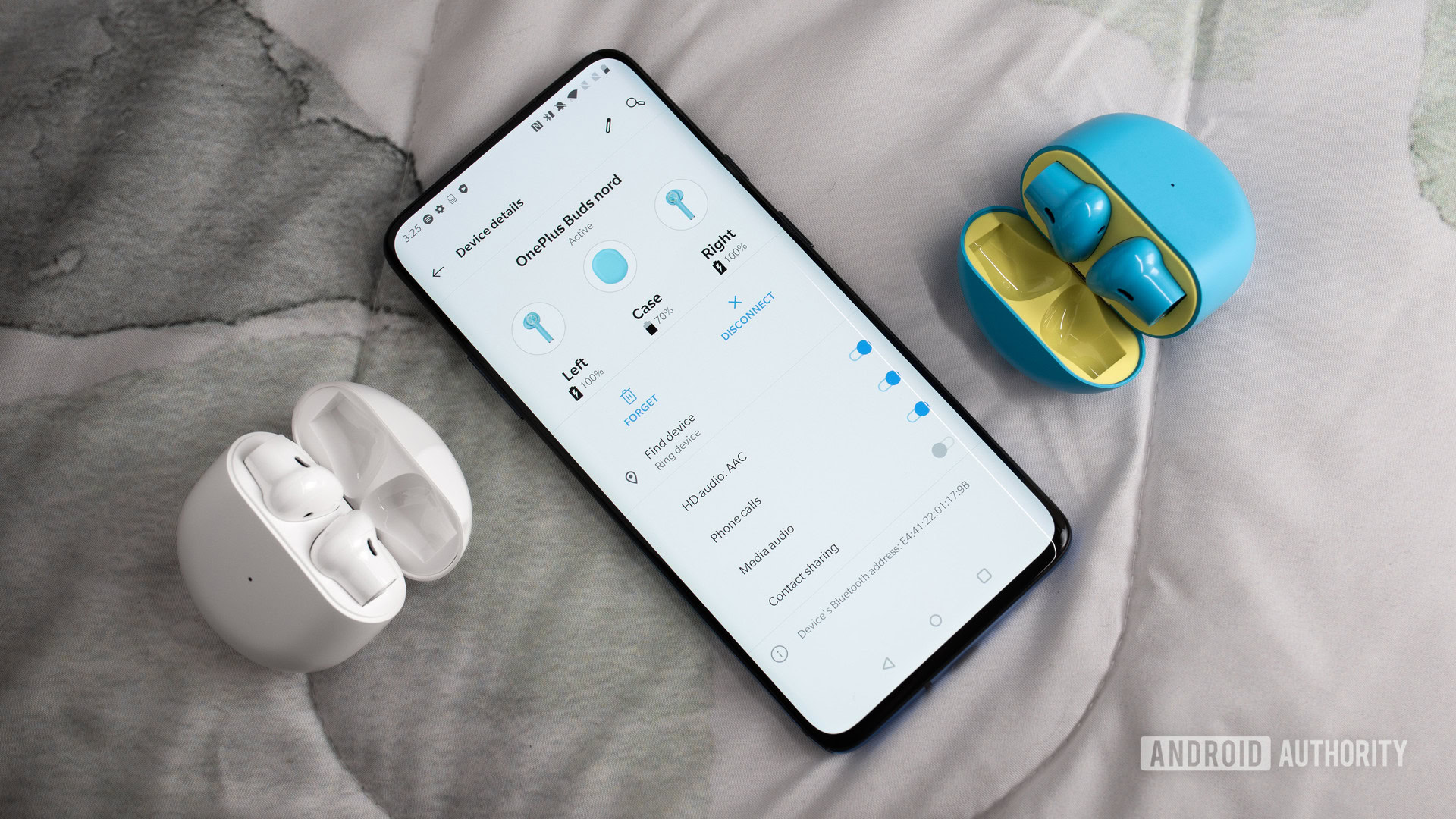
During my review period, a OnePlus representative explained to me that the OnePlus Buds may only be updated via OnePlus smartphone, but that has since changed with the advent of the HeyMelody mobile app. This allows all Android 6.0 and later devices to update the firmware of the OnePlus Buds and other supported products. This app isn’t yet available for iOS devices.
Read on: The best headphones for the OnePlus 9 series: OnePlus Bullets Z and more
Still, only the OnePlus 7, OnePlus 8, and OnePlus 9 series phones are to receive Dolby Atmos support through the headset. This functionality was made available on July 30, for the OnePlus 6 series; July 29, for the OnePlus 7 series; and July 27, for the OnePlus 8 series via OTA update. At a glance this seems suspect, but is simply explained away by the fact that older OnePlus handsets don’t support Dolby Atmos.
Onboard controls are limited
The CD-inspired touch panels offer a handful of controls, but the menu isn’t nearly as comprehensive as what we’ve seen from the likes of cheaper options such as the JLab Go Air. You’re afforded the bare minimum when it comes to onboard controls:
- To alternate between the current and last-used device, hold either touch panel for three seconds.
- To reject a call, hold either touch panel for five seconds.
- To answer or end a call, double-tap either touch panel.
- To skip a track, double-tap either touch panel.
The double-tap function will be customizable after the immediate OTA update released at the end of the month. Listeners will then be able to access their smart assistant, skip a song or play the previous song, play/pause media, and answer or end a call.
Gamers and video streamers can take advantage of Fnatic Mode
OnePlus’ Game Space app allows users to enable Fnatic Mode, which reduces audio-visual lag to 103ms. While this can’t compete with the latency times of radio-frequency adapters found in gaming headsets, it’s very good for Bluetooth technology. Here are the steps you need to take in order to watch YouTube videos, stream Spotify, and play all your favorite games.
- Open the Game Space app.
- Tap the “+” in the top-right corner of the screen, and check the apps you want added to Game Space.
- Reveal the notification card that reads, “Gaming mode is on.”
- To enable Fnatic Mode, tap the first slider; a notification will appear informing you of how this mode will affect your phone’s performance.
- You may now select from the apps you’ve added and experience low-latency streaming.
Your OnePlus smartphone will then know that these apps are designated for Game Space, and will notify you that “Gaming mode is on” when you open them from your phone’s app drawer or home screen. From there, you may enable Fnatic Mode by pulling down the notification shade and selecting the Android System card. From there, tap Fnatic Mode for low-latency streaming.
Do the earbuds stay connected?

Our OnePlus Buds review units were unable to maintain a connection. I tested both OnePlus Buds headsets with a myriad of devices, including a OnePlus 7 Pro, Samsung Galaxy S10e, MacBook Pro, and HP Omen computer. Several connection drops occurred with each device, though there were fewer issues when using the earbuds with a OnePlus phone. OnePlus Community members shared similar experiences on OnePlus forums. This was frustrating, but the headset immediately reconnected to the device and resumed playback. Connection issues are easily remedied through firmware updates, so this should be a quick fix.
The connection was unstable across devices, even with a OnePlus 7 Pro.
Bluetooth 5.0 firmware affords a standard 10m range, and Bluetooth multipoint isn’t supported. In order to switch between the current and previously used device, you must tap-and-hold either touch panel for three seconds. AAC is the only high-quality Bluetooth codec supported by the buds. This was disappointing because the OnePlus Bullets Wireless 2 and Bullets Wireless both support aptX streaming. AAC’s performance is volatile across Android depending on which device is used, so some Android phones may need to be forced into SBC streaming.
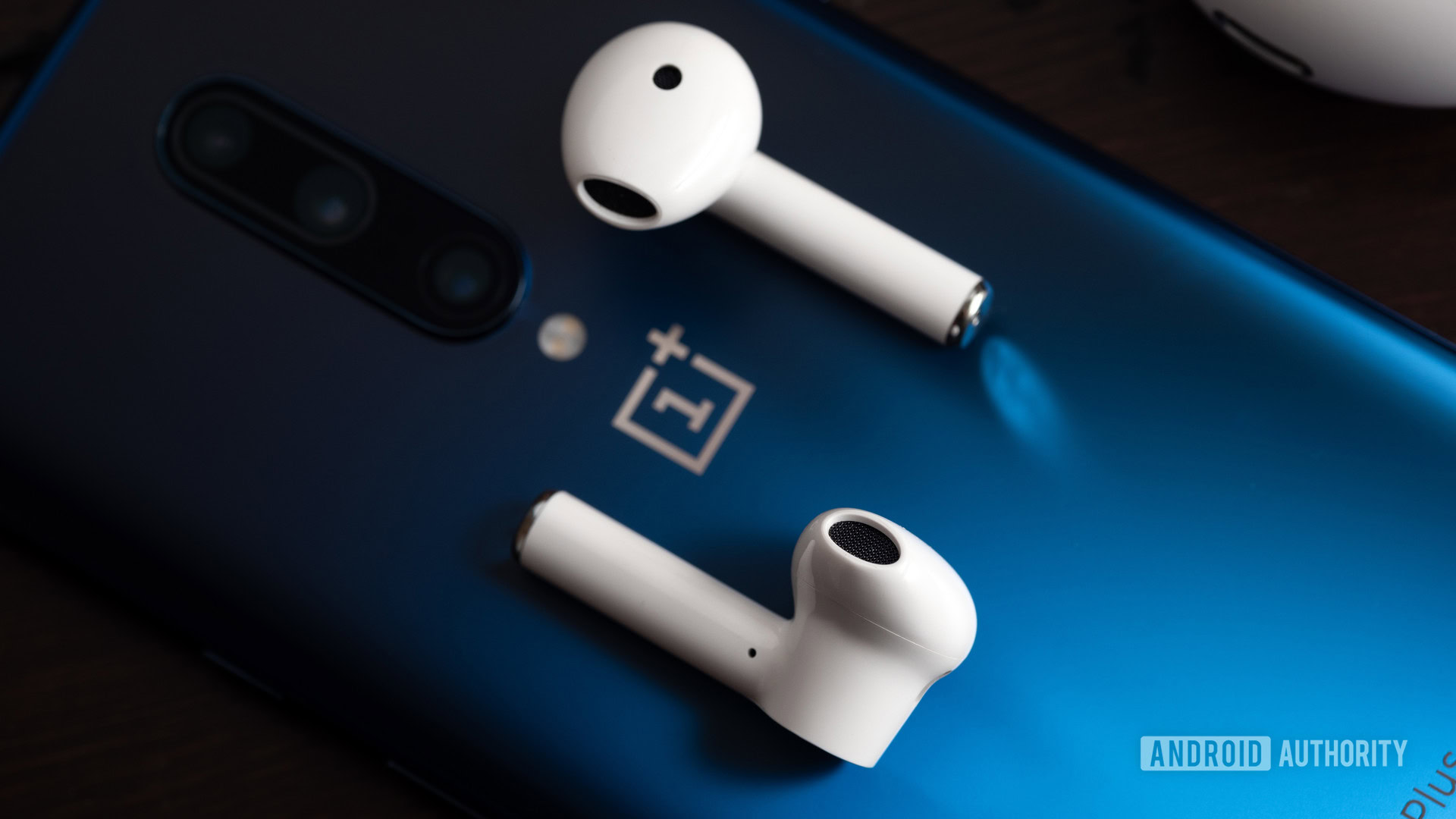
Again, the lack of aptX support is a bummer but, frankly, isn’t devastating. Sound quality has much more to do with audio engineering and having a good fit that blocks out environmental noise than Bluetooth codec support alone. The earphones’ semi-open fit severely degrades your ability to perceive clear audio, so the sound quality benefits of aptX support would be null.
How long does the battery last?
SoundGuys’ OnePlus Buds review yielded a battery life of 6 hours, 12 minutes before the buds needed to be recharged. This falls short of the listed 7-hour playtime, but most listeners will get a bit closer to that mark by listening at quieter volumes: SoundGuys tests all audio products at a constant 75dB output. Using the earbuds for calls is more demanding, and taking calls alone leaves you with 41% less battery life from the headset compared to just streaming music.
Learn more: Headphone buying guide: A beginner’s guide to all things headphones
When the batteries are drained, all you need to do is pop the buds back into the case for 10 minutes. Doing so supplies you with 100 minutes of listening. The case also supports Warp Charge: 10 minutes of charging via USB-C affords 10 hours of battery life, which is insanely good. It takes 80 minutes to complete a full charge cycle for the earbuds and case altogether.
The OnePlus Buds don’t sound great: isolation is poor
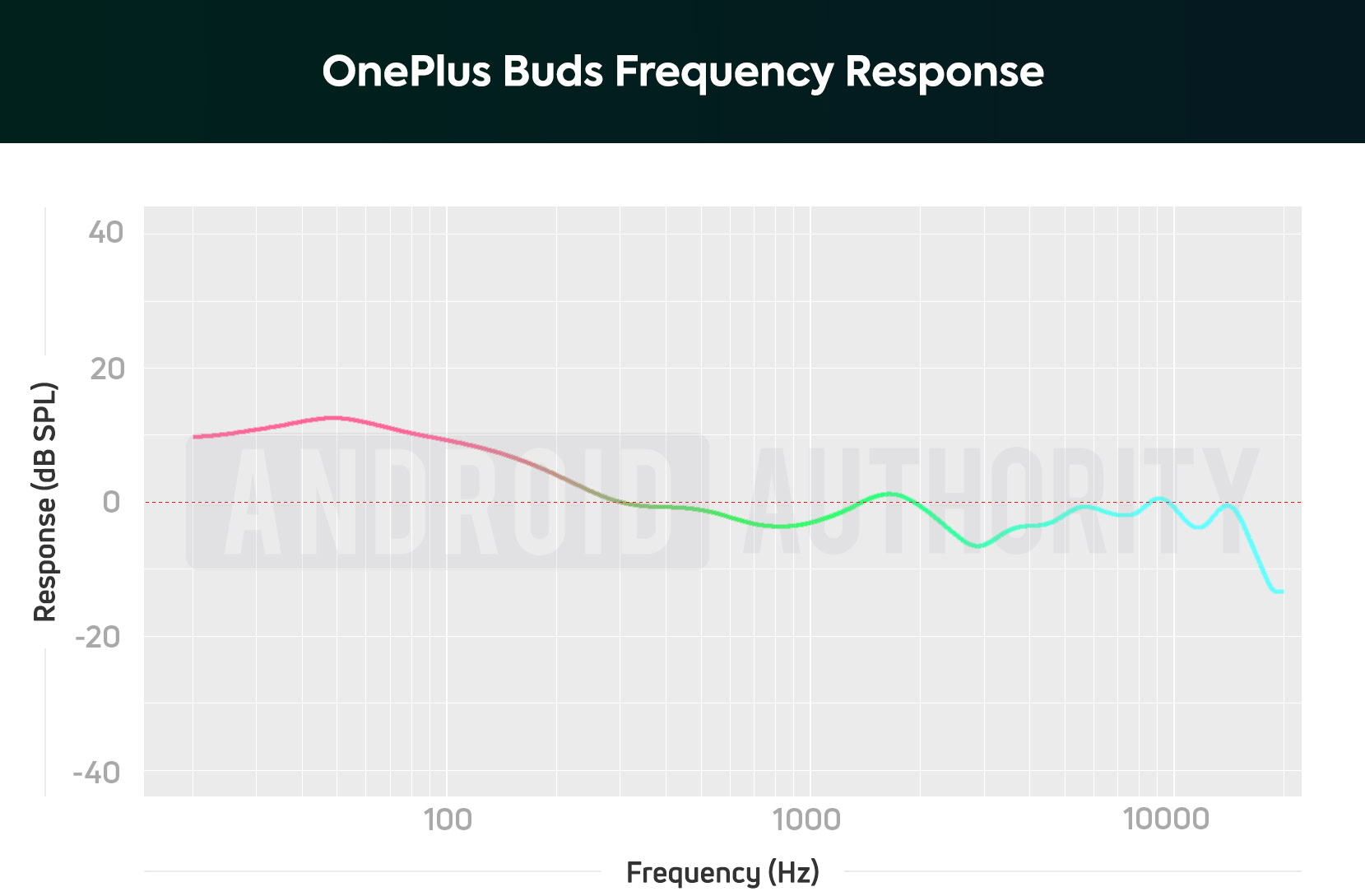
Dirac Audio Tuner support enables a bass-heavy frequency response from the 13.4mm dynamic drivers. The amplified bass is immediately noticeable with any song, and isn’t shy about rendering vocals unclear. Casual listeners may not be bothered by this; in fact, this kind of emphasis is preferred for exercising, but accurate audio reproduction isn’t happening with these buds.
This emphatic emphasis is necessary because the earbuds don’t seal to the ear, so you run into an issue called auditory masking. This is when a loud sound (e.g., traffic) makes it hard to perceive a relatively quiet one (e.g., your music).
We experience auditory masking regularly: background noise greatly affects our brains’ abilities to process low-frequency notes, which Dirac knows, so it amplified the bass as a combative measure. The sacrifice to this sort of sound signature is that when you’re in optimal listening conditions, like your home, bass notes sound too loud and make it hard to hear detail from your music. Nearly all harmonic resonances were lost when listening with the OnePlus Buds in favor of a more engaging, generally palatable sound signature.
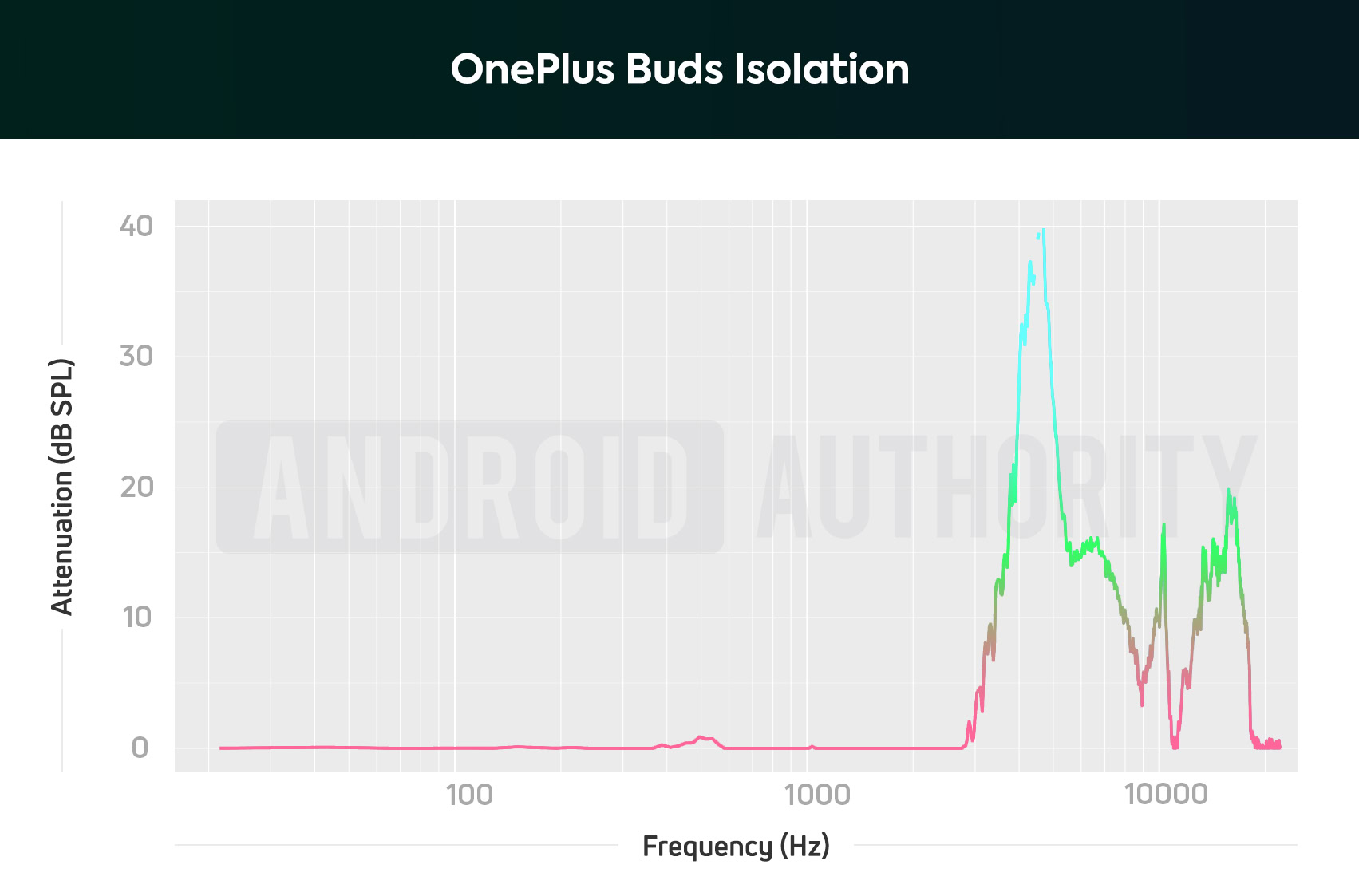
Again, passive isolation is poor because the earbuds lack distinguished nozzles and ear tips. Your building’s A/C unit, cubicle neighbors’ conversations, and general foot traffic will always be audible. While this isn’t great for auditory fidelity, the benefit is safety: you’re always aware with this kind of earbud design. More comfortable, safety-oriented earbuds exist though, making these a hard sell for non-OnePlus fans.
Can you use the OnePlus Buds for phone calls?
Yes, the OnePlus Buds microphone system is one of its best assets: each bud houses three microphones and uses ambient noise reduction technology. All of this is to say the mics are very good at relaying accurate and clear audio while filtering out environmental noise. The headset performed well in my apartment as my roommate watched TV, and outside during a moderately windy day.
OnePlus Buds microphone demo:
How does the microphone sound to you?
OnePlus Buds vs. OnePlus Bullets Wireless Z
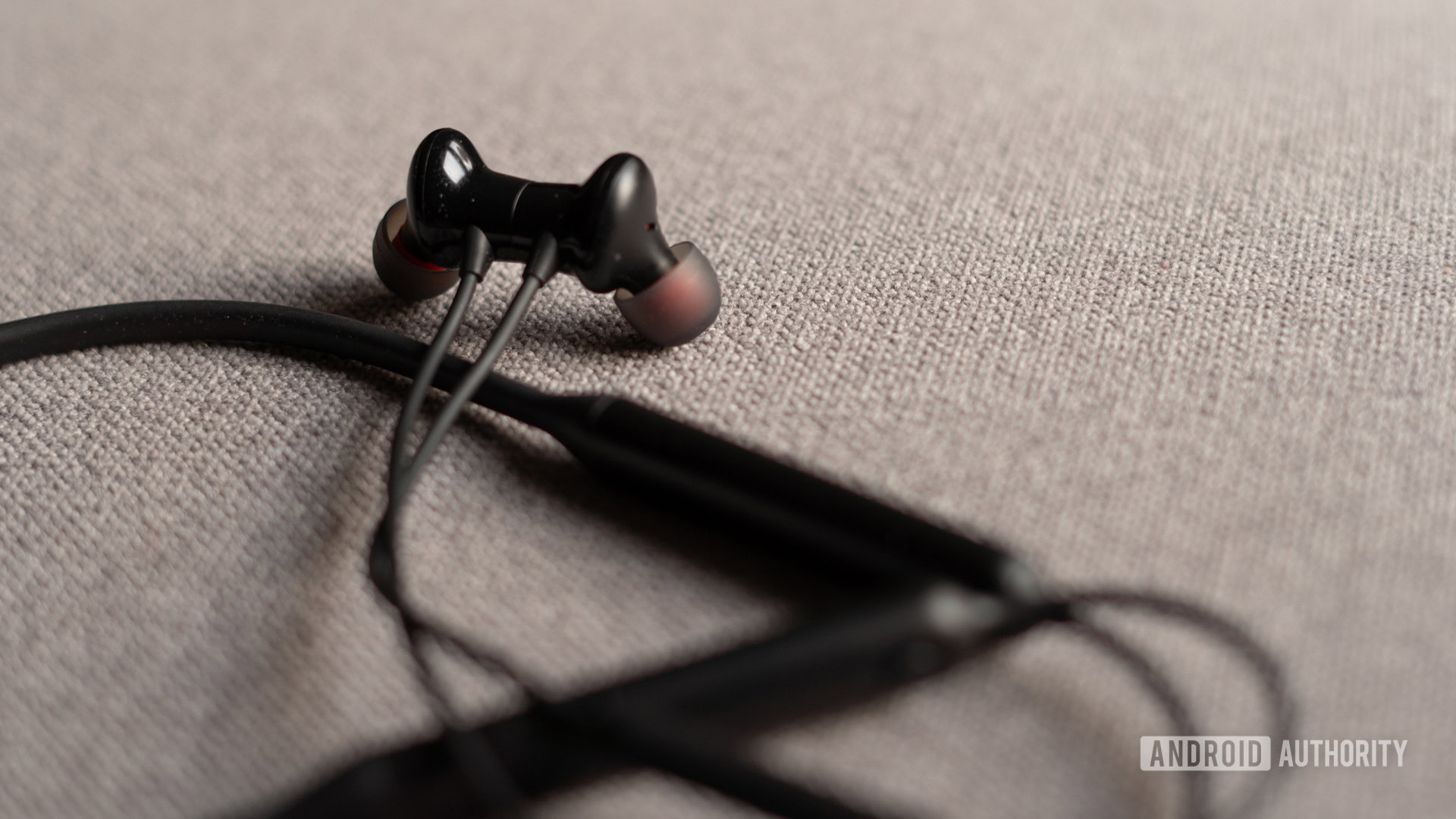
The OnePlus Bullets Wireless Z and OnePlus Buds represent OnePlus’ attempt to take the budget audio world by storm. This makes sense seeing how the earbuds are accompanying the OnePlus Nord’s release, a relatively affordable phone with a solid feature set. Both headsets are water-resistant, though the Bullets Wireless Z are more durable (IP55 vs IPX4). What’s more, standalone battery life is better with the neckbuds as it can house larger battery cells. Controls are also more comprehensive and intuitive with the Bullets Wireless Z than with the OnePlus Buds.
Listeners who value sound quality and battery life should strongly consider the OnePlus Bullets Wireless Z over the true wireless buds, because the former has ear tips that physically prevent outside noise from degrading sound quality. On the other hand, listeners who want to remain ever aware of their surroundings and appreciate the ultimate convenience that true wireless earbuds afford should get the OnePlus Buds.
OnePlus Buds vs. OnePlus Buds Z
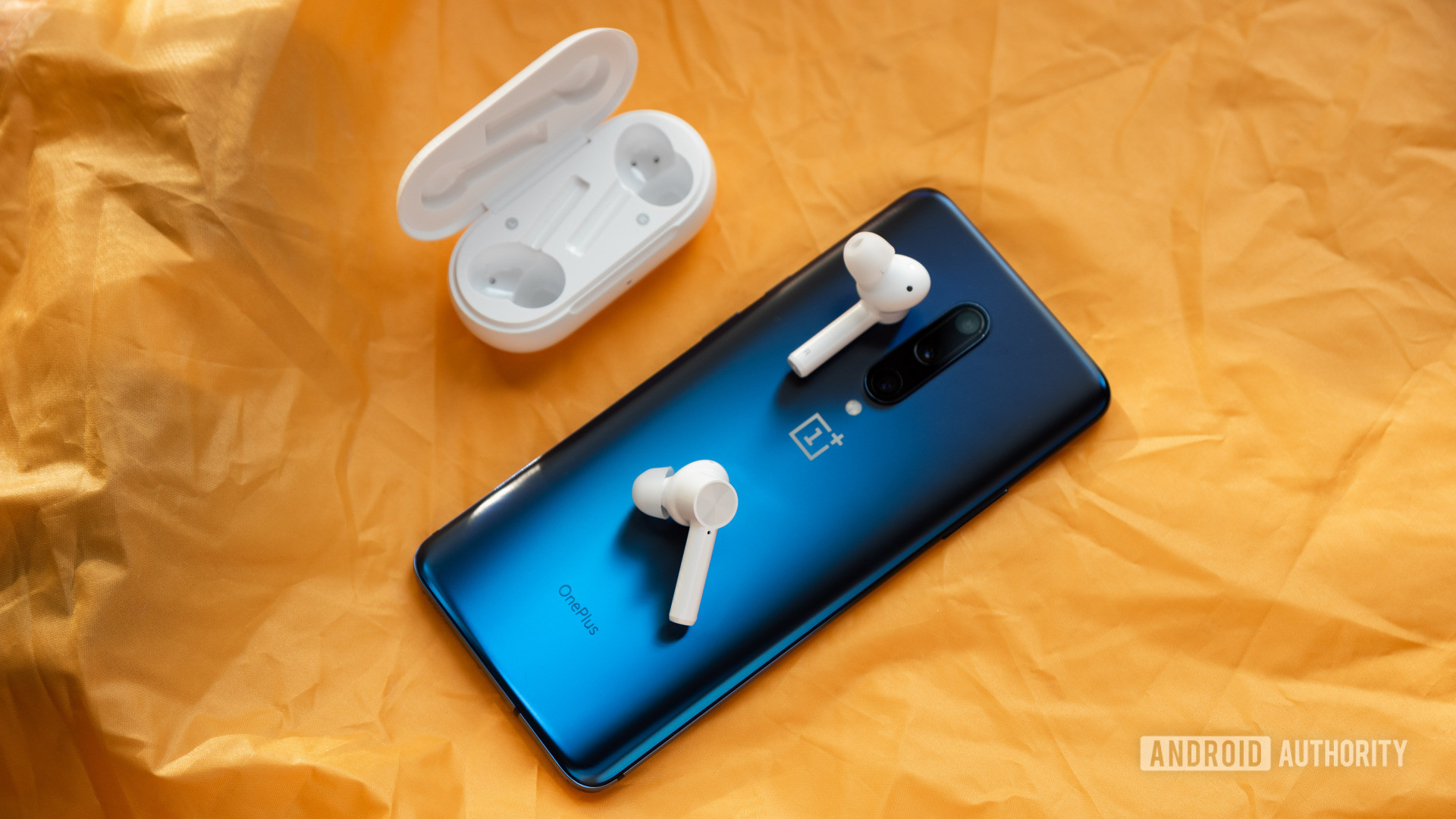
The OnePlus Buds Z are more affordable than the OnePlus Buds, making them the smarter option for budget shoppers. The Buds Z seal to the ear, which means they block out background noise much more effectively than the pricier OnePlus Buds. This design makes it easier for you to perceive loud bass notes and vocal detail. OnePlus made the Buds Z more durable than the standard Buds, because the Buds Z boast an IP55 rating.
The OnePlus Buds may still be a fine option if you want to keep an ear on your surroundings at all times. This is paramount for anyone who lives in a busy area and likes to listen to music while walking about. The original OnePlus Buds charging case also supports wireless charging, which the Buds Z case lacks.
OnePlus Buds vs. Samsung Galaxy Buds Live
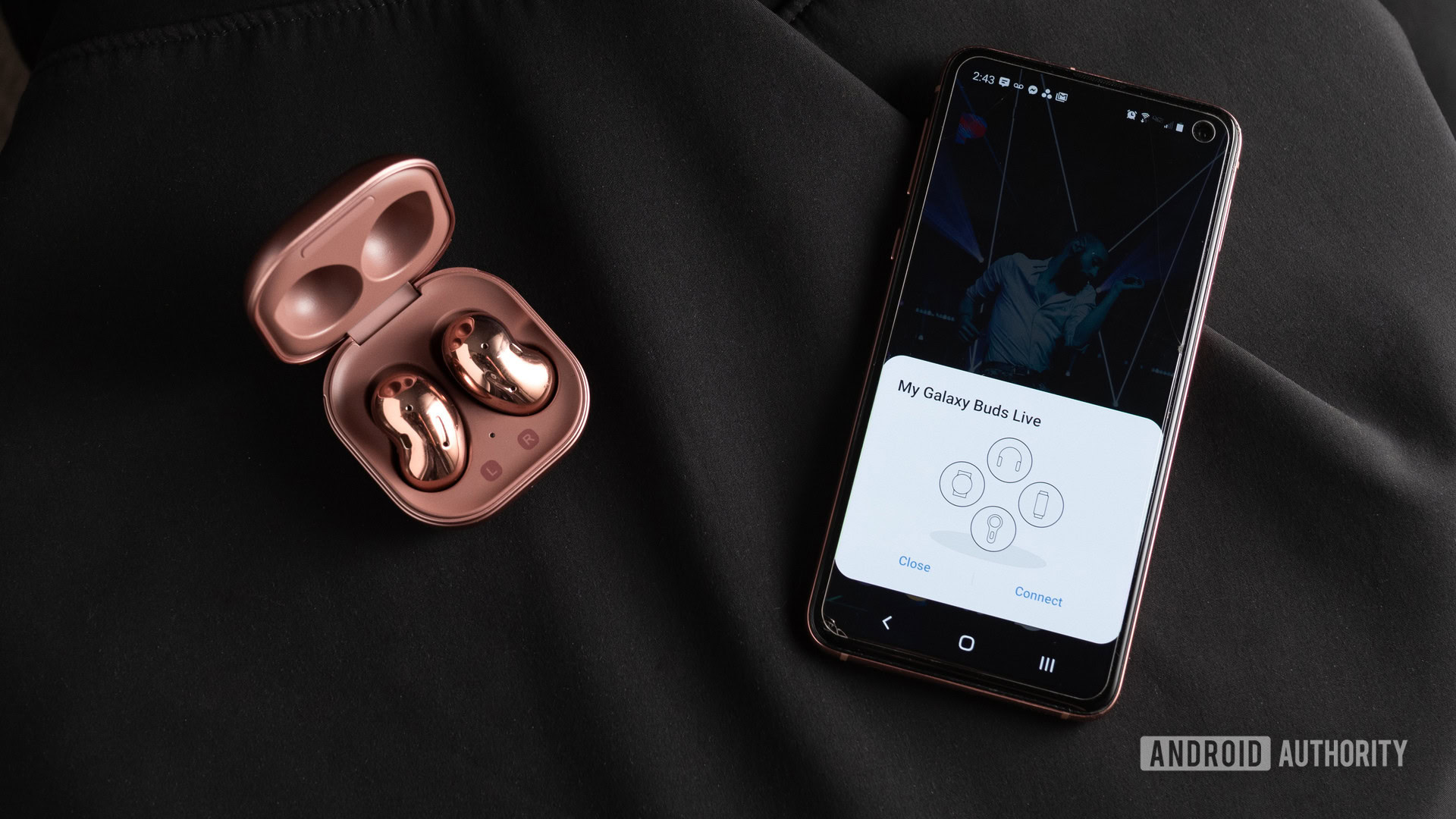
Listeners who are drawn to an open-type fit should think hard about getting the OnePlus Buds over alternatives like the Samsung Galaxy Buds Live. For one, the Galaxy Buds Live fit much better than the OnePlus Buds, because the bean-shape contours to the shape of the outer ear. Samsung also provides wing tips to secure the buds to the outer ear, which helps.
Get the full breakdown: Samsung Galaxy Buds Live review
Yes, the Galaxy Buds Live headset is a lot more expensive than OnePlus’ but this investment may be worth it depending on your needs. See, Samsung doesn’t discriminate against phone brands as it applies to software updates. iOS and Android devices can receive updates to the Galaxy Buds Live, so long as the Galaxy Wearable app is installed on the source device.
Another reason to get the Galaxy Buds Live: noise-cancelling. Oh, you read that correctly; Samsung experimented with its bean-shaped buds by including active noise-cancelling (ANC) with an open-fit build. This is the first of its kind, and remarkable because the noise-cancelling works. To what degree the ANC is effective depends on how well the earphones fit your ears. Even minor jostling can greatly affect ANC performance, unfortunately. However, the fact that the buds are able to combat low-frequency noise to any degree is quite a technological feat, given the challenges of an unsealed ear canal.
Anyone who must have an open-type fit will be better off saving for the Galaxy Buds Live, as Samsung is on top of software updates that elongate the product’s lifespan.
Should you buy the OnePlus Buds?

OnePlus smartphone owners may leap at the chance to grab a pair of the OnePlus Buds, and for good reason: these are a solid pair of budget earbuds that play very well within the OnePlus ecosystem. While the engineering and design team has every right to feel proud of the case and efficient charging, these features don’t make up for the poor connection quality and fit.
Don’t miss: Best true wireless earbuds under $50
At first it seemed OnePlus didn’t care to serve the Android community at large, because of how it limited updates to its proprietary handsets — on top of missing aptX support, but it has since righted its wrongs with the HeyMelody app. OnePlus wasn’t alone in relegating certain features to its own smartphones; this strategy is ripped right from Apple and Huawei’s playbooks.
Die-hard OnePlus fans who find semi-open earbuds comfortable will enjoy the OnePlus Buds for their immediate auto-play and pause functionality.

Affordable alternatives to the OnePlus Buds
Readers in search of a more versatile pair of headphones with a $100 budget have a wide array of options at their disposal, and we’re highlighting a pick from Mobvoi and a pick from Anker Soundcore.
Get the Mobvoi TicPods 2 if you like the semi-open fit
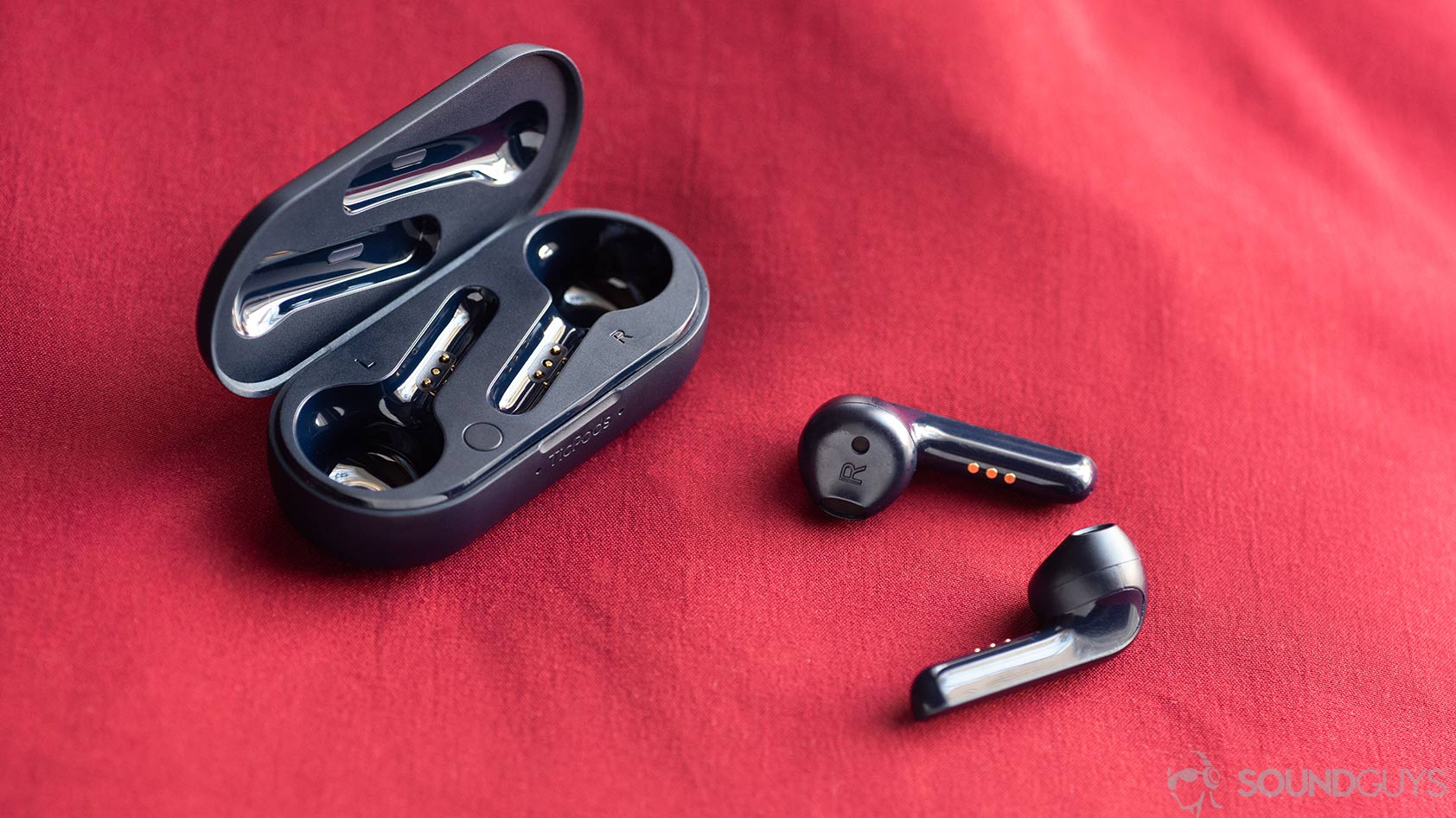
Listeners who want a pair of earbuds that keep them aware at all times should really read up on the Mobvoi TicPods 2 and Mobvoi TicPods 2 Pro, both of which feature a stick-shaped build and ambient noise-cancelling microphones. The standard TicPods 2 microphones aren’t quite as advanced as OnePlus’, because each earbud houses just a single microphone.
Mobvoi’s TicPods 2 have a more tame bass response, so you can enjoy a great collection of music without losing too much detail to auditory masking. What’s more, the Mobvoi companion app is available on all mobile devices, so every buyer has access to updates that may extend the lifetime of their headset.
The Anker Soundcore Liberty Air 2 are a great pair of AirPods lookalikes
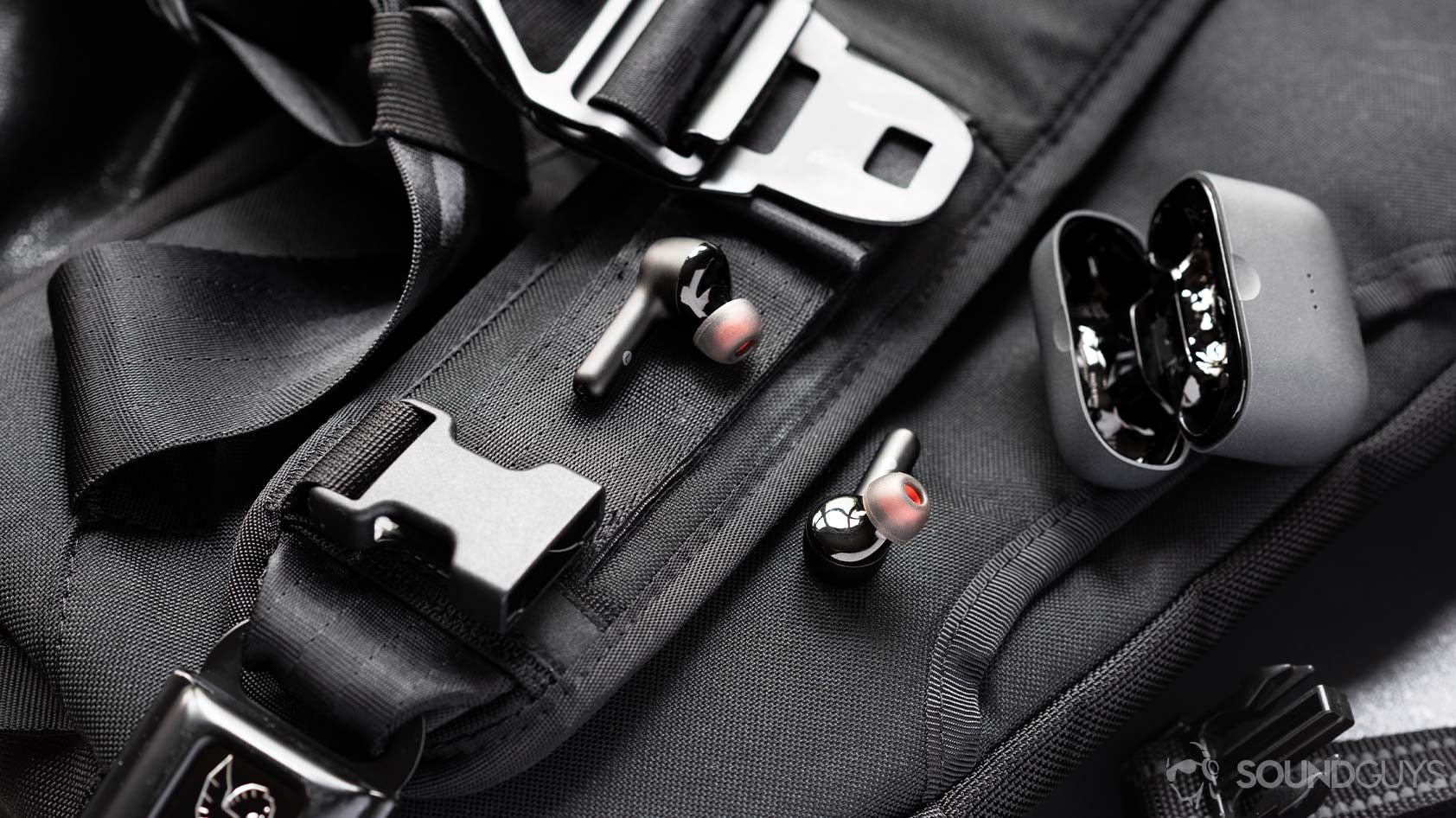
Anker Soundcore knows how to work the budget crowd, and its Liberty Air 2 true wireless earbuds improve upon the already great Liberty Air. These earbuds feature one of the best microphone systems around, and the ear tips allow for a more comfortable, secure fit for exercise and general movement. They also block background noise and promote optimal sound reproduction, so you can really feel that amplified bass response.
Listeners who want a more tempered bass response can tone it down via the Soundcore app, which, like Mobvoi’s, is available across devices. You can create a custom EQ or select from over 20 presets. No matter what, you’re still able to stream via AAC or aptX with a selected EQ, which is a rare feature. Battery life is good: the earbuds last just over 7 hours on a single charge, and the fast charging happens to be slightly more efficient for the earbuds than it is with OnePlus’ buds.